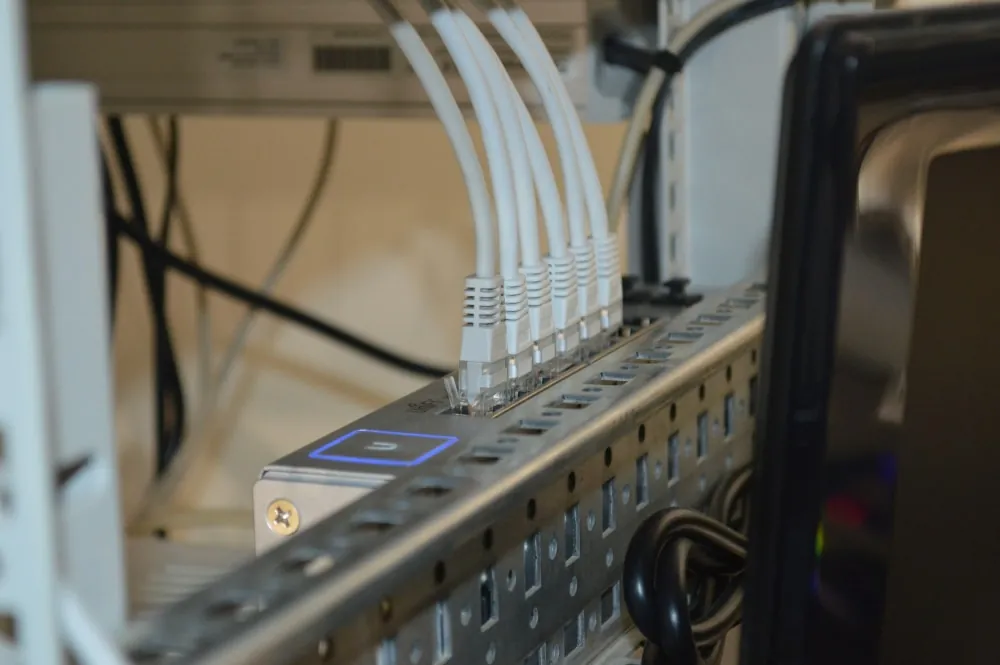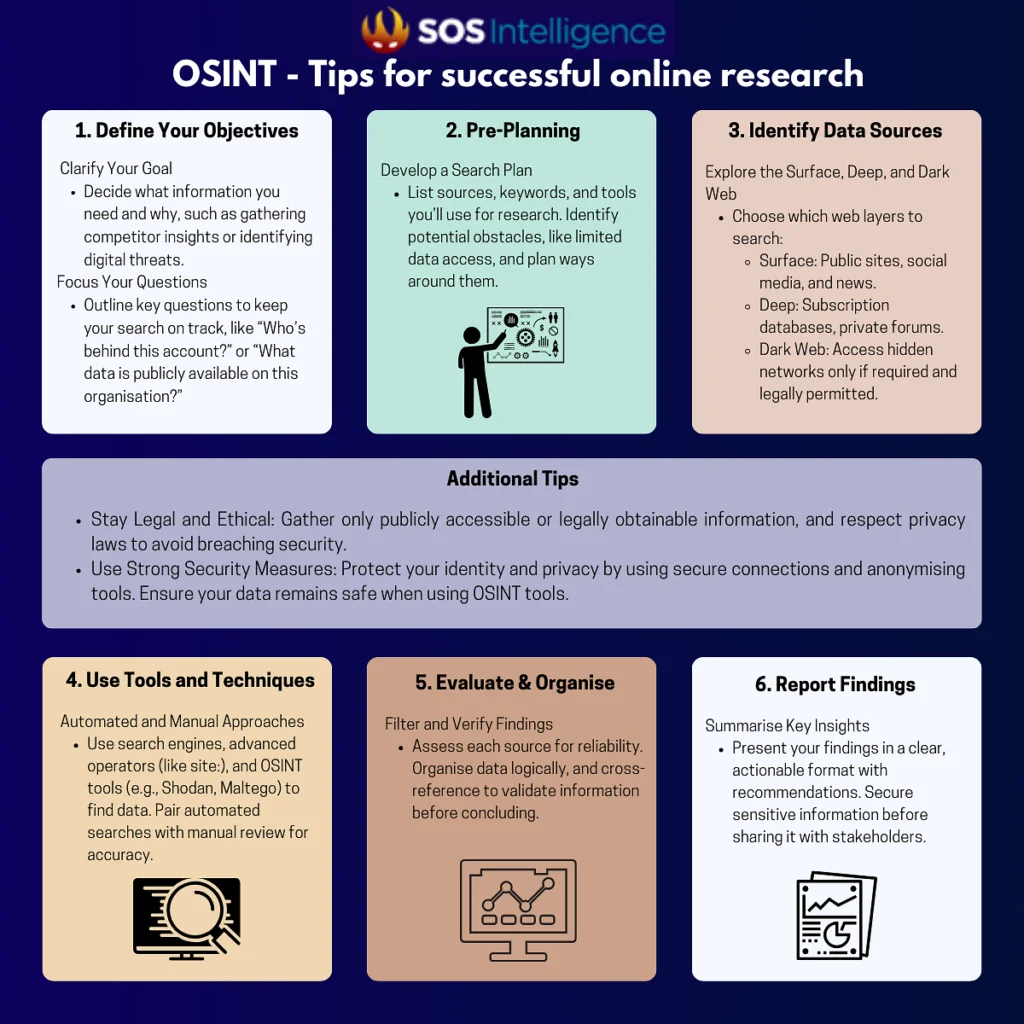Open Source Intelligence (OSINT) has become an invaluable tool across cybersecurity, business intelligence, and law enforcement. By leveraging publicly available information from sources like social media, websites, and public records, OSINT enables organisations to monitor emerging threats, analyse competitor activity, and gain insights without resorting to intrusive or covert methods. With the rapid growth of digital information, OSINT offers unprecedented access to data that can inform decision-making and risk assessments.
However, this access to information comes with significant ethical and legal challenges, particularly concerning privacy and data handling. Unlike traditional intelligence methods, OSINT relies on openly available data, which can blur the lines of ethical responsibility. Practitioners must consider whether the information they gather could infringe upon individuals’ privacy, especially when it involves personal data or data that, while accessible, may not be ethically sound to exploit. Additionally, OSINT activities often cross international borders, complicating compliance with different countries’ data protection regulations, such as the General Data Protection Regulation (GDPR) in the EU.
The goal of this discussion is to provide guidance on how to conduct OSINT responsibly. By adhering to ethical principles and respecting legal frameworks, OSINT professionals can ensure their intelligence-gathering activities remain respectful of privacy while effectively supporting organisational objectives. Responsible OSINT practices not only help to mitigate legal risks but also uphold the trustworthiness and integrity of the profession in an era where data accessibility is at an all-time high.
What is OSINT and Why Are Ethics Important?
OSINT is the process of collecting and analysing information from publicly accessible sources, including social media, news sites, forums, and online databases. OSINT allows organisations to gather actionable insights without the need for invasive methods, drawing on the vast and diverse information available on the internet. It has become an essential tool for sectors like cybersecurity, business intelligence, and governmental operations, enabling organisations to gain valuable information about potential threats, market conditions, and broader geopolitical developments.
For cybersecurity, OSINT aids in monitoring for potential data leaks, phishing threats, or signals of a planned attack, enhancing an organisation’s preparedness and defence capabilities. In the business world, OSINT enables companies to stay informed about competitor moves, market trends, and customer sentiment, giving them an edge in a highly competitive landscape. Meanwhile, governmental bodies leverage OSINT to support law enforcement and intelligence operations, tracking issues like disinformation campaigns or border security threats.
However, as powerful as OSINT is, it raises important ethical questions. Given its reliance on publicly accessible data, OSINT operates in a grey area where information, while legally available, may still be ethically sensitive. For instance, gathering personal information from social media could potentially breach an individual’s privacy, even if the content is technically public. Additionally, different jurisdictions have varying regulations on data use, such as the General Data Protection Regulation (GDPR) in the EU, which aims to protect individuals’ privacy rights. These complexities make it critical for OSINT practitioners to conduct intelligence gathering responsibly, balancing their goals with a commitment to ethical standards.
The importance of ethics in OSINT cannot be overstated. Ethical considerations ensure that intelligence practices respect privacy and remain compliant with legal frameworks. By maintaining responsible OSINT practices, organisations not only mitigate potential legal risks but also build trust and credibility, reinforcing the responsible use of publicly available data in a way that benefits both their objectives and the public at large.
Key Ethical Challenges in OSINT
OSINT operates within an ethical landscape shaped by the ease of access to publicly available information, presenting unique challenges for responsible practice. These challenges include balancing privacy with public access, ensuring accuracy, and navigating issues of consent and transparency.
One of the core ethical tensions in OSINT is the balance between privacy and public access. While the data collected in OSINT activities is publicly accessible, individuals may not be aware that their information could be repurposed for intelligence gathering. Just because data is available online does not automatically justify its unrestricted use. This tension raises important ethical questions about respecting individuals’ privacy while still leveraging OSINT’s benefits. Practitioners must assess each case individually, considering the context of the data and its potential impact on individuals’ privacy before using it.
Another ethical challenge is the responsibility to ensure accuracy and verification. OSINT can often include information from varied sources, some of which may be incomplete, biased, or outdated. The ethical obligation to verify information is crucial to avoid the risk of spreading misinformation, which can lead to serious consequences for individuals or organisations implicated by unverified intelligence. OSINT practitioners are ethically bound to rigorously check and corroborate sources before sharing information or using it in decision-making.
Lastly, the issues of consent and transparency are complex in the digital age. Although information may be publicly available, that does not imply individuals have consented to its use for intelligence purposes. The assumption that public access equates to ethical use oversimplifies the reality of digital consent. People may share information without intending for it to be monitored or analysed by third parties. Transparency in OSINT practices—clearly communicating how and why data is gathered and handled—helps address these complexities, fostering ethical integrity.
Legal Implications of OSINT
OSINT can offer invaluable insights, yet it must operate within complex legal frameworks to ensure compliance and protect individual rights. Key considerations include adherence to data protection laws, managing cross-border legal challenges, and balancing security needs with privacy rights.

One of the primary legal obligations for OSINT practitioners is adhering to data protection laws like the General Data Protection Regulation (GDPR) in the EU and the California Consumer Privacy Act (CCPA) in the US. These regulations set strict guidelines on the collection, processing, and retention of personal data, designed to protect individual privacy rights. OSINT activities that involve personal information must follow these laws closely to avoid legal repercussions and potential fines. GDPR, for instance, mandates data minimisation and purpose limitation, meaning that personal data collected should be directly relevant and necessary for the purpose it was obtained.
Cross-border legal issues further complicate OSINT practices, as data gathered may span multiple jurisdictions, each with its own data protection laws. Some countries have strict rules about how personal data can be used, even if it is publicly accessible. This can create legal ambiguity for OSINT practitioners, who must navigate a patchwork of global regulations. Ensuring compliance requires a comprehensive understanding of both local and international data protection requirements.
Finally, OSINT practitioners must balance the need for security with respect for privacy, especially in sensitive areas like crime prevention or investigative journalism. While gathering intelligence is critical for identifying and mitigating risks, it is essential to respect individual privacy rights and limit data collection to what is ethically and legally appropriate. This balance is vital in preserving public trust and ensuring that OSINT activities contribute positively to security without infringing on personal freedoms.
Best Practices for Ethical and Responsible OSINT
Effective and ethical OSINT requires a well-defined approach that prioritises respect for privacy and accountability. Adopting best practices, including establishing a clear ethical framework, maintaining operational security (OPSEC), and ensuring transparency, helps to safeguard both the integrity of intelligence activities and the privacy rights of individuals.
A clear ethical framework is essential for guiding OSINT activities. Organisations should establish detailed guidelines that define when, how, and why information is collected. This framework should outline permissible sources, data retention policies, and limitations on personal data usage. By setting clear boundaries and ethical principles, practitioners can avoid unnecessary data collection and mitigate risks related to privacy infringements or misuse. Having a structured ethical policy also provides a standardised approach, ensuring consistency and compliance across all OSINT activities.
Operational Security (OPSEC) is another critical aspect, as it helps protect both the organisation conducting OSINT and the individuals involved. Practitioners should use secure methods for gathering, storing, and sharing information to prevent sensitive data from being exposed or misused. This includes anonymising searches where appropriate, securely storing information, and protecting the identities of individuals involved in sensitive intelligence work. Effective OPSEC safeguards ensure that OSINT activities do not unintentionally compromise the security of individuals or the organisation itself.
Transparency and accountability are essential in maintaining ethical OSINT practices. Keeping a thorough record of OSINT activities, including sources, decision-making processes, and any limitations placed on data usage, supports accountability and aids in addressing any ethical concerns that may arise. Documenting activities and decisions also provides a reference for evaluating practices against legal or regulatory requirements, fostering a culture of transparency.
Managing Privacy Concerns in OSINT Work
Privacy is a primary concern in OSINT, as intelligence activities often involve handling sensitive and personal information. Best practices, including data minimisation, anonymisation, and responsible data retention, help mitigate privacy risks while maintaining effective intelligence gathering.

Data minimisation and anonymisation are essential principles in responsible OSINT. Practitioners should collect only the information necessary to meet the intelligence objectives, avoiding extraneous data that could infringe upon privacy rights. By focusing on essential data and anonymising any personal information wherever possible, OSINT professionals reduce the risk of unnecessary privacy breaches and align their activities with data protection regulations.
Handling sensitive information securely is also crucial throughout the OSINT lifecycle. This includes implementing secure storage solutions, restricting access to authorised personnel, and using encryption when storing or sharing sensitive data. Practitioners should establish protocols to handle particularly sensitive information carefully, ensuring it is protected against unauthorised access or leaks that could harm individuals or compromise organisational integrity.
Data retention and disposal are equally important for privacy management. Setting clear guidelines on how long data will be retained, with periodic reviews, ensures that information is only kept as long as it is useful and relevant. When data is no longer needed, secure deletion and disposal processes should be followed to prevent the potential misuse of archived information. These practices help maintain the privacy of individuals and uphold ethical standards in OSINT.
Adapting to Emerging OSINT Technologies and Ethical Considerations
As new technologies emerge, the OSINT community must continuously evolve its ethical practices to address potential privacy and security concerns. Staying informed about advances in OSINT tools and techniques, particularly in AI, is essential for maintaining responsible intelligence practices.
Ongoing education is crucial for understanding how new tools may impact ethical practices in OSINT. Technologies such as AI for data analysis can increase efficiency and reveal deeper insights, but they also pose unique ethical questions, including potential biases in data interpretation and the risk of excessive data collection. Practitioners should stay informed of new developments and continuously assess the ethical implications of their tools.
Regularly reviewing and updating ethical guidelines ensures they remain relevant as technology and privacy norms change. Guidelines must be adaptable, reflecting current technologies and emerging privacy concerns, such as the increased collection and processing of personal data. Regular updates also help organisations align with evolving data protection laws, maintaining compliance and ethical standards.
The role of AI in OSINT, in particular, demands a high level of transparency, fairness, and accountability. As AI tools become more common in OSINT, practitioners must address ethical challenges related to potential biases, data accuracy, and automated decision-making. Using AI responsibly in OSINT involves transparent methods and a commitment to fairness, ensuring that AI-based insights are accurate and do not unintentionally harm individuals or communities. By proactively addressing these ethical considerations, OSINT professionals can adapt effectively to the changing technological landscape.
Conclusion
The practice of ethical and responsible OSINT is essential to maintaining credibility and trust in the field. By prioritising privacy, accuracy, and transparency, organisations can ensure that OSINT serves its purpose effectively while respecting individual rights and adhering to legal standards. These principles are especially critical as OSINT continues to expand in scope and as technological advancements push the boundaries of data collection and analysis.
A commitment to ongoing ethical review is vital, as societal standards and privacy laws evolve in response to new challenges. Organisations that regularly assess and adapt their ethical frameworks can stay ahead of emerging issues, ensuring that their intelligence practices remain responsible and compliant. This proactive approach not only protects individuals’ privacy but also reinforces the organisation’s reputation as a trusted, responsible entity in the intelligence community.
Industry collaboration is key to promoting best practices in OSINT. By working together, organisations, professionals, and regulators can develop and share guidelines that uphold ethical standards across the field. Collaborative efforts to create clear, adaptable practices and to address emerging ethical questions will support a sustainable and responsible future for OSINT. As the landscape of open-source intelligence grows more complex, this shared commitment to ethics will be essential for building a secure and trustworthy intelligence ecosystem that benefits all stakeholders.
CCTV Photo by Tobias Tullius on Unsplash




























Recent Comments